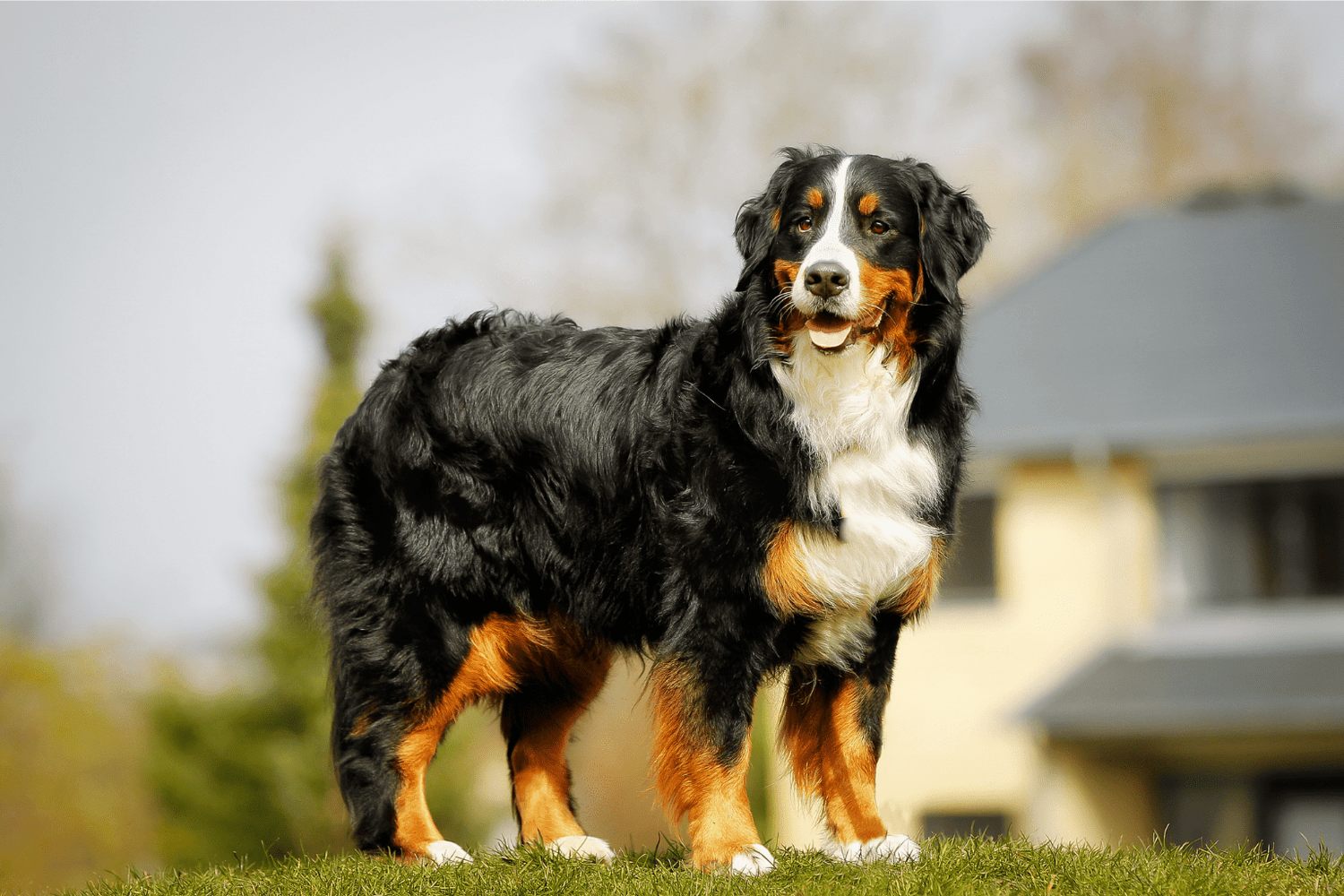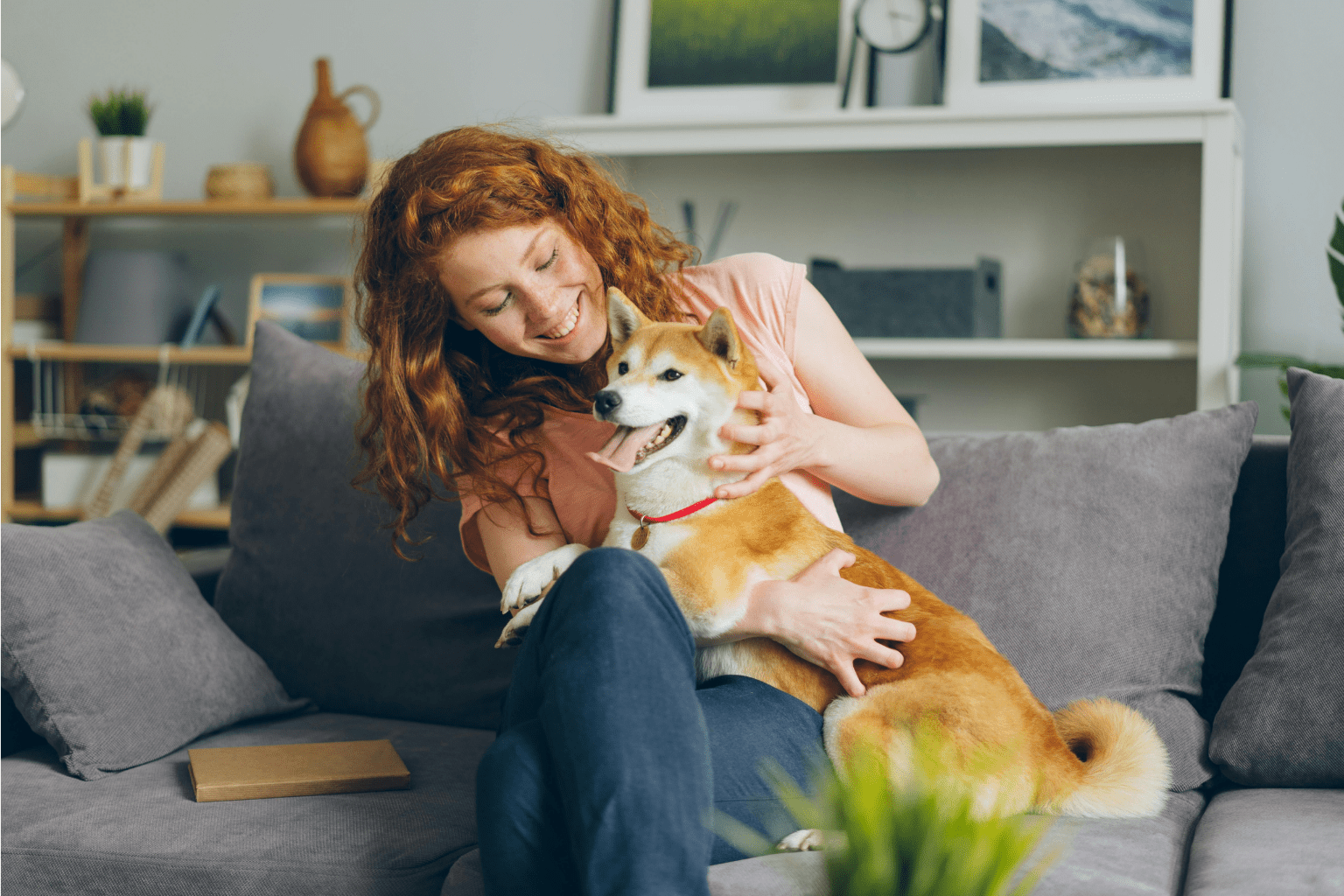Key Takeaways
- Dogs have a unique lung anatomy with four lobes on the right lung and two on the left.
- The extra lung lobes provide dogs with increased respiratory capacity.
- Healthy lungs are essential for a dog's active lifestyle and physical activities.
- Understanding canine lung anatomy helps in appreciating their respiratory efficiency.
Table of Contents
- The Marvel of Canine Lungs: Anatomy & How They Work
- Warning Signs & Symptoms: When Your Dog's Lungs Need Extra Attention
- Root Causes: What Challenges a Dog's Lungs & How to Spot Them Early
- Diagnosing Dog Lung Problems, Vet Tests, Home Checks, & Community Stories
- Natural Ways to Support Lung Health, Our Holistic 'Nurture With Nature' Approach
- Nutrition for Lively Lungs, Foods & Treats That Help Dogs Breathe Easy
The Marvel of Canine Lungs: Anatomy & How They Work
Your dog's lungs for dogs are remarkable organs that power every tail wag, fetch session, and hiking adventure. Unlike humans who have two lung lobes on each side, dogs have four lobes on the right lung and two on the left, giving them extra respiratory capacity for their active lifestyles.
To help maintain this vital respiratory capacity, many pet parents turn to Breathe Easy, Kennel Cough & Respiratory Remedy for natural support of their dog's lung health.
Think of your pup's lungs as tiny air balloons called alveoli, millions of them clustered like grapes. These microscopic sacs exchange oxygen for carbon dioxide with every breath. The airways branch like an upside-down tree: from the trachea (windpipe) to bronchi, then smaller bronchioles that feed each alveolus. For dogs with allergies or sensitivities, Dog Allergy Relief & Immune Support can help reduce respiratory irritation and support overall lung function.
This intricate system delivers oxygen to fuel your dog's muscles, brain, and organs. When lungs work efficiently, you see bright energy, steady breathing (10-30 breaths per minute at rest), and pink gums, all signs of healthy oxygen flow.
How Dogs Breathe, A Step-by-Step Walkthrough
Quick Answer: How Do Dogs Breathe?
Dogs breathe through their nose and mouth, pulling air into lungs where tiny alveoli swap fresh oxygen for waste carbon dioxide. This oxygenated blood then travels to power every cell in their body.
Here's the beautiful process: Your dog inhales, expanding their chest and drawing air through airways into alveoli. Oxygen crosses thin alveolar walls into blood vessels, while carbon dioxide moves the opposite direction to be exhaled. This gas exchange happens with each of their 15,000-25,000 daily breaths.
Dogs vs. Cats & Humans, Lung Structures and Function
| Species | Right Lung Lobes | Left Lung Lobes | Resting Breath Rate | Special Features |
|---|---|---|---|---|
| Dogs | 4 lobes | 2 lobes | 10-30/minute | Extra lobe capacity |
| Cats | 4 lobes | 2 lobes | 20-30/minute | Smaller airways |
| Humans | 3 lobes | 2 lobes | 12-20/minute | Larger lung volume |
Brachycephalic breeds (bulldogs, pugs) and deep-chested dogs (Great Danes, German Shepherds) face unique challenges. Short-muzzled pups work harder to move air through compressed airways, while large-chested breeds risk gastric torsion that can compress lung space.
Warning Signs & Symptoms: When Your Dog's Lungs Need Extra Attention

Recognizing early lung distress can mean the difference between a quick recovery and a serious emergency. Dogs are masters at hiding discomfort, so subtle changes in breathing patterns often signal trouble before obvious symptoms appear.
Top 7 Lung Distress Signals in Dogs
Immediate red flags include open-mouth breathing at rest, persistent coughing (especially at night), wheezing sounds, and any collapse or fainting episodes. These demand urgent veterinary attention.
Subtler warning signs include pale or blue-tinged gums, crackling sounds when breathing, reluctance to exercise, and breathing faster than 40 times per minute while resting. Your dog might also sleep with their head elevated or seem restless during normal rest periods.
Emergency Threshold
Call your vet immediately if breathing exceeds 40 breaths per minute at rest, gums appear blue or white, or your dog collapses. These symptoms indicate potential lung fluid buildup requiring immediate intervention.
Breeds, Ages, & Situations at Higher Risk
Senior dogs over 8 years face increased risk due to weakening heart valves that can cause fluid backup into lungs. Brachycephalic breeds struggle with compressed airways year-round, while dogs with chronic allergies develop inflamed respiratory passages that compromise lung function.
Environmental factors multiply risk: exposure to cigarette smoke, strong cleaning chemicals, dusty conditions, or sudden weather changes can trigger respiratory distress in susceptible dogs. Overweight pets work harder to breathe, putting additional strain on their respiratory system.
Common Misconceptions, What Lung Issues Don't Look Like
Many pet parents expect dramatic gasping or obvious distress, but early lung problems often appear as subtle energy changes or mild coughing that comes and goes. Dogs don't always pant when experiencing breathing difficulty, some become unusually quiet or withdrawn instead.
Root Causes: What Challenges a Dog's Lungs & How to Spot Them Early
Understanding why lungs for dogs develop problems helps you protect your pup before crisis hits. The two main categories, heart-related and non-heart causes, create different patterns of symptoms that savvy pet parents can learn to recognize.
For dogs with chronic allergies or respiratory sensitivities, Dog Allergy Relief & Immune Support offers comprehensive support for both allergy and respiratory challenges.
Heart vs. Non-Heart Causes, Cardiogenic and Noncardiogenic Pulmonary Edema
Cardiogenic causes stem from heart problems that create fluid backup into lungs. Degenerative valve disease (especially common in Cavalier King Charles Spaniels and older small breeds) prevents proper blood flow, causing fluid accumulation. These dogs often cough more at night when lying flat.
Noncardiogenic triggers include pneumonia, smoke inhalation, toxic exposures, or severe allergic reactions that directly inflame lung tissue. Unlike heart-related issues, these often develop rapidly after specific exposures and may affect younger, otherwise healthy dogs.
| Cause Type | Common Triggers | Onset Speed | Key Question for Your Vet |
|---|---|---|---|
| Heart-Related | Valve disease, enlarged heart | Gradual (weeks/months) | "Has my dog's heart changed on X-rays?" |
| Non-Heart | Infections, toxins, trauma | Rapid (hours/days) | "What could my dog have been exposed to?" |
Environmental Triggers & Everyday Hazards
Household dangers lurk in unexpected places. Cigarette smoke, scented candles, and strong cleaning sprays can irritate sensitive respiratory passages. Outdoor threats include seasonal pollen, wildfire smoke, and even certain mulches or fertilizers that release airborne particles.
Practical protection tip: Ventilate rooms for 10+ minutes after using any aerosol products before allowing your dog back inside. Switch to pet-safe cleaning alternatives and avoid smoking anywhere near your pup's living spaces.
Recognizing Slow-Burn vs. Sudden Lung Emergencies
Acute emergencies develop within hours, think smoke inhalation, severe allergic reactions, or trauma. Dogs show dramatic breathing changes, panic, or collapse. These require immediate emergency care.
Chronic conditions unfold over weeks or months with gradually worsening cough, reduced exercise tolerance, or subtle breathing changes. While less dramatic, early intervention prevents these from becoming emergencies.
Emergency Action Steps
For sudden breathing distress: Keep your dog calm, ensure fresh air circulation, and transport immediately to your vet. Avoid forcing them to lie down if they prefer sitting upright.
Diagnosing Dog Lung Problems, Vet Tests, Home Checks, & Community Stories
Modern veterinary diagnostics can pinpoint lung issues quickly, but your home observations provide crucial context that guides your vet toward the right tests. Understanding what to expect reduces anxiety and helps you become a better health advocate for your pup.
Step-by-Step: What Vets Will Check (and What You Can Track at Home)
Your vet will listen to heart and lung sounds using a stethoscope, checking for murmurs, crackling, or abnormal rhythms. They'll assess breathing effort, gum color, and overall body condition. Blood work reveals infection markers or organ function changes, while chest X-rays show fluid accumulation, enlarged heart, or lung inflammation patterns. For more in-depth information on veterinary approaches, see this peer-reviewed article on canine respiratory diagnostics.
Advanced cases may require EKG to evaluate heart rhythm or lung fluid aspiration to identify specific causes like bacteria or cancer cells. These procedures sound scary but provide definitive answers that guide targeted treatment.
At-Home Monitoring You Can Start Today
Count your dog's breathing rate during calm rest periods, place your hand on their chest and count breaths for 15 seconds, then multiply by four. Normal ranges from 10-30 breaths per minute. Check gum color every morning; healthy gums appear pink and return to pink within 2 seconds after gentle pressure.
Documentation strategy: Record breathing rates, energy levels, and any coughing episodes for 3 days before your vet visit. Note timing patterns, do symptoms worsen at night, after meals, or during specific activities? This information helps your vet tremendously.
Community Spotlight: Bailey's Story
When Bailey, a 7-year-old Golden Retriever, started coughing during evening walks, her mom Sarah initially thought it was just excitement. Within a week, Bailey was breathing faster at rest and seemed less interested in fetch. Sarah's vet diagnosed early heart valve changes causing mild fluid backup.
Combining prescribed heart medication with gentle homeopathic support and environmental improvements, Bailey returned to her playful self within two weeks. "The natural remedies seemed to give her extra comfort while the heart medicine did its work," Sarah shares. Today, Bailey enjoys longer hikes than ever, proving early intervention makes all the difference.
Natural Ways to Support Lung Health, Our Holistic 'Nurture With Nature' Approach

Your dog's lungs for dogs benefit tremendously from gentle, natural support that works alongside your vet's treatment plan. Rather than waiting for problems to develop, proactive care strengthens respiratory resilience and helps your pup breathe easier every day.
For dogs with anxiety that may exacerbate breathing issues, Pet Relax Dog Calming Anxiety Relief can help promote calm and support overall respiratory wellness.
Fresh Air, Clean Spaces: Environmental Boosts
Simple environmental changes create immediate breathing benefits. Use pet-safe air purifiers with HEPA filters to remove allergens and particles. Vacuum weekly with a quality filter system, paying special attention to areas where your dog sleeps and plays.
Daily fresh air routine: Open windows for 10 minutes each morning to circulate clean outdoor air, even in winter. This simple habit reduces indoor pollutant buildup and provides the oxygen-rich environment your dog's respiratory system craves.
Herbal and Homeopathic Supports, Gentle Help for Respiratory Wellness
Homeopathic pellets offer targeted support for breathing comfort without harsh side effects. These gentle remedies work by supporting the body's natural healing processes, helping maintain clear airways and comfortable breathing patterns. For more on natural approaches to canine anxiety, see homeopathic remedies for dogs anxiety.
Our BestLife4Pets lung support pellets dissolve easily on the tongue and provide consistent daily support. Unlike liquids, pellets store safely without refrigeration and deliver precise dosing every time.
When to Use Homeopathic Support
Prevention: Daily support during allergy seasons or for senior dogs
Comfort: Alongside vet treatment for breathing challenges
Recovery: Supporting healing after respiratory infections
Everyday Routines for Stronger Breaths
Gentle exercise builds lung capacity without overexertion. Short, frequent walks work better than long, strenuous hikes for dogs with breathing sensitivities. Control humidity levels between 30-50% to prevent airway irritation from overly dry or moist air.
Elevate your dog's sleeping area slightly to promote easier breathing during rest. A raised bed or extra pillow helps drainage and reduces nighttime coughing, especially beneficial for older dogs or those with heart-related breathing issues.
BestLife4Pets Lung Remedies, How Our Pellets Can Help
Our Breathe Easy, Kennel Cough & Respiratory Remedy pellets work gently to ease breathing discomfort and support healthy lung function. The convenient pellet form makes dosing simple, just place 2-3 pellets inside your dog's lip where they dissolve naturally.
Most pet parents notice improved comfort within 3-7 days of consistent use. Signs of improvement include easier breathing during rest, reduced coughing episodes, and increased energy for daily activities. Our pellets complement veterinary care perfectly, never replacing professional treatment but enhancing your dog's comfort throughout recovery.
Not a substitute for professional veterinary advice.
Nutrition for Lively Lungs, Foods & Treats That Help Dogs Breathe Easy
Strategic nutrition supports respiratory health from the inside out. The right foods provide essential nutrients that strengthen lung tissue, support immune function, and maintain the energy your dog needs for healthy breathing patterns.
For more tips on healthy treats, you might also enjoy reading about peas for dogs as a nutritious snack option.
Why Diet Matters for Healthy Breaths
Proper nutrition delivers antioxidants that protect delicate lung tissue from environmental damage. High-quality proteins provide amino acids necessary for tissue repair, while essential fatty acids reduce inflammation throughout the respiratory system. Well-nourished dogs show better exercise tolerance and faster recovery from breathing challenges.
Beef Lung Treats, Powerhouse Snack for Vital Dogs
Beef lung treats offer concentrated nutrition that directly supports respiratory wellness. These single-ingredient treats provide high-quality protein, natural collagen for tissue strength, and essential amino acids that fuel cellular repair throughout the respiratory system. For more on the nutritional science behind canine diets, see this recent veterinary nutrition study.
Training integration: Use pea-sized portions for small dogs, larger pieces for big breeds. Reward within 2 minutes of desired behavior for maximum training effectiveness. The natural texture and appealing taste make these treats perfect for both training sessions and daily wellness support.
| Treat Type | Protein Content | Best For | Storage |
|---|---|---|---|
| Beef Lung | 85%+ protein | Active dogs, seniors | Cool, dry place |
| Standard Treats | 15-25% protein | General training | Varies by type |
BestLife4Pets Treats: Testing, Trust, and Community Feedback
Our treats undergo rigorous quality testing to ensure purity and nutritional consistency. Field-tested by rescue organizations managing dozens of dogs and trusted by wellness-focused pet parents worldwide, these treats deliver reliable nutrition you can count on.
Real community feedback drives our product development. Rescue Rachel relies on our treats for efficient training across multiple dogs, while Golden-Years Gary uses them to support his senior Lab's daily wellness routine. Every treat reflects our commitment to nurturing health naturally. For more inspiration, check out our roundup of the best Christmas gifts for dogs and cats.
Frequently Asked Questions
What is unique about the anatomy of a dog's lungs compared to humans and cats?
Dogs have a unique lung structure with four lobes on the right lung and two on the left, unlike humans and cats who have fewer lobes. This extra lung capacity supports their active lifestyles by allowing more efficient oxygen exchange during physical activities.
What are the common warning signs that indicate a dog might be experiencing lung problems?
Watch for symptoms like persistent coughing, rapid or labored breathing, excessive panting, lethargy, or bluish gums. These signs suggest your dog's lungs may need extra attention and a vet check-up.
How can natural supplements and nutrition support the respiratory health of dogs?
Natural supplements can help ease respiratory discomfort and support lung function by reducing inflammation and boosting immune response. Balanced nutrition with antioxidant-rich foods also helps maintain healthy lung tissue and overall breathing efficiency.
Which dog breeds are more prone to lung-related challenges and why?
Breeds with shorter noses like Bulldogs and Pugs often face breathing difficulties due to their anatomy. Larger or active breeds may also be prone to respiratory strain, especially if they have underlying allergies or sensitivities affecting their lungs.



